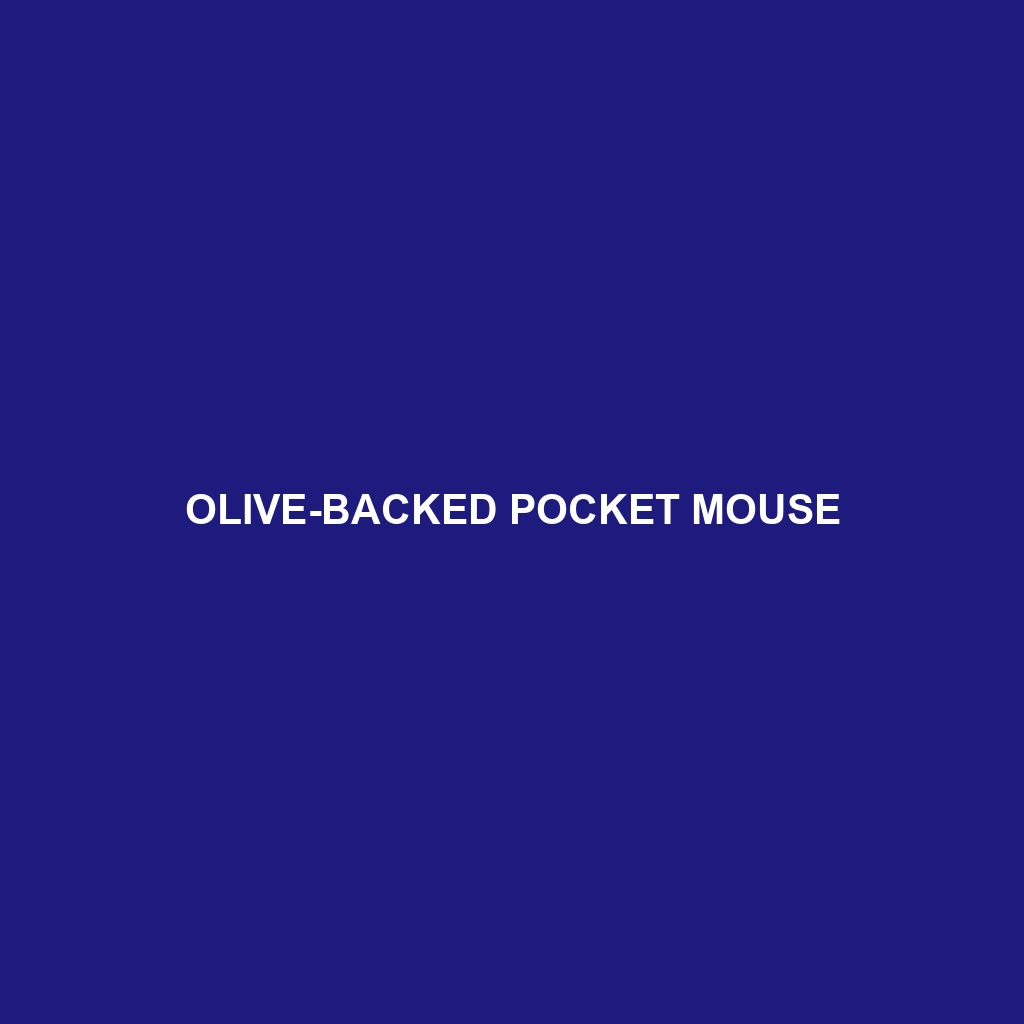Olive-backed Pocket Mouse
Common Name: Olive-backed Pocket Mouse
Scientific Name: Perognathus merriami
Habitat
The Olive-backed Pocket Mouse is primarily found in the arid regions of the southwestern United States and northern Mexico. Its preferred habitats include sandy soils, grasslands, and scrublands, where it can easily dig burrows to escape the harsh conditions. They thrive in environments with sufficient ground cover, such as low shrubs and open areas, which provide both shelter and foraging opportunities.
Physical Characteristics
The Olive-backed Pocket Mouse is a small rodent, measuring approximately 8 to 10 inches in length, including the tail. Its fur is typically light brown or olive, providing excellent camouflage against the sandy soils it inhabits. Distinctive features include large cheek pouches, elongated ears, and a long, bushy tail, which aids in balance while navigating its terrain. The mouse’s feet are adapted for digging, making them expert burrowers.
Behavior
Olive-backed Pocket Mice are primarily nocturnal, exhibiting peak activity during the cooler nighttime hours. They are known for their burrowing behavior, creating extensive tunnel systems to store food, escape predators, and rear their young. These mice are generally solitary, only coming together during the breeding season. Their agility and speed allow them to evade threats, making them adept at surviving in their natural habitats.
Diet
These mice are granivorous, primarily feeding on seeds, grains, and various plant materials. They have been observed to consume seeds from various grasses and shrubs found in their environments. Their feeding habits include storing surplus food in their cheek pouches to eat later, a behavior that aids in survival during periods of food scarcity.
Reproduction
The reproductive habits of the Olive-backed Pocket Mouse typically involve a breeding season that spans from late winter through early autumn. Females usually give birth to litters containing 2 to 6 offspring after a gestation period of approximately 3 weeks. The young mice are altricial, meaning they are born hairless and blind, relying fully on their mother for nourishment and care during the early stages of growth.
Conservation Status
The Olive-backed Pocket Mouse is currently listed as “Least Concern” by the IUCN; however, its habitats are increasingly threatened by development and habitat destruction. Conservation efforts are vital to maintain stable populations and protect these small mammals from potential future threats.
Interesting Facts
One fascinating aspect of the Olive-backed Pocket Mouse is its ability to survive in extreme temperatures, ranging from scorching heat during the day to cold nights. These adaptations make it a resilient species in desert ecosystems. Additionally, they play an important role in seed dispersal, aiding plant growth and regeneration in their habitats.
Role in Ecosystem
The Olive-backed Pocket Mouse contributes significantly to its ecosystem as both a seed disperser and prey for larger predators. By consuming and dispersing seeds, these mice help promote plant diversity and health within their habitats. They also serve as a food source for birds of prey and small mammals, highlighting their importance in the food web.
